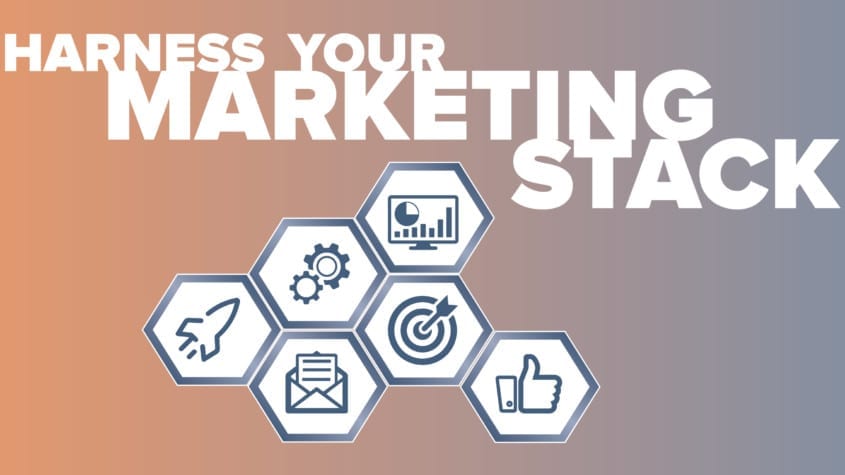The MarTech Explosion:
It’s not a revelation that the world of technology is changing at a fast-paced rate. With recent developments such as holographic smart phones, artificial intelligence, and not just 3D printing but 3D printing with metal and…for some reason…pole-dancing robots, technology in every field is advancing at unprecedented rates. Marketing Technology (MarTech) is no exception.
The number of software providers in our field has exploded from around 150 in 2011 to over 7000 this year! While growth may have slowed recently due to market saturation, you can bank on the future having continued growth in both the complexity and variety of options available.


Thanks to Scott Brinker and everyone at chiefmartec.com and behind them who have built these graphics over the years.
Research and Stats
OK, this is where my data driven side takes over…
It’s increasingly challenging to stay ahead of the breadth of tech developments in Marketing and Communications and in a recent survey of CMOs, 27% were concerned with staying ahead and taking advantage of digital marketing technology trends (Source: Korn Ferry).

In light of this, it’s no coincidence that the investment in MarTech has increased dramatically year-over-year from 22% in 2017 to 29% in 2018 to become the single largest expenditure for marketing departments. It has surpassed the costs of labour, paid media and agencies as a percentage of overall budgets (Source: Gartner).
And despite 70% of marketers reporting that they use between 0 and 10 marketing technologies (Source: Komarketing), I would expect that to be low if you drill down into it. The example below may look complicated, but it’s a relatively straightforward example that would take 15+ software solutions to execute. The plethora of arrows demonstrate how everything on the Marketing side is connected but it still excludes Sales tools like RFP software (Loopio, Quros), inbound call analytics (Dialog Tech), ecommerce (Shopify) and other tools that may be critical to your business. Yes, more extensive platforms like those of Marketo, HubSpot and Salesforce can consolidate several of the components on one platform but they still require using multiple products within those umbrella offerings.

Your MarTech Build
While different tech models will work for different business models, the conversion point and core of lead generation typically revolves around your website and other digital touchpoints. How this is set-up and used to engage with your audience should vary dramatically on a case-by-case basis that is dependdnt on your KPIs, strategic goals and corporate culture. Choosing the right technology solutions to build a strong and results driven marketing stack is a critical initiative for start-ups, small businesses or larger companies looking to revamp their stack to better fit their changing and growing corporation. The reality is, your marketing stack needs to be as unique as your company. It truly is a one size fits one scenario.
The Business Challenges
Limited resources
Let’s face it, if you are a smaller company this is likely an area where you lack internal professionals who are experienced in the field and focused solely on MarTech. Due to this, it’s especially hard for marketers in start-ups and small to medium sized businesses to know what marketing technologies are best fitted to their business needs. Add on the decreased marketing spend as a percentage of revenue (down to 11.2% in 2018 from 12.1% in 2016 – Soure: Gartner), the challenge of building and sustaining a solid marketing stack can be exhausting for an already overloaded staff.
Lack of system integration
Aligning your MarTech decisions with the greater organization can make the process more involved but it can have far reaching benefits if properly done. Marketing doesn’t live in a bubble. Other departments such as finance, IT, customer service and of course, sales must be taken into consideration in order to build a well-oiled machine. Will finance need to use your CRM for billing (i.e. shared customer database)? Will support tickets be generated through the website, social media or something else? Essentially the overarching corporate structure needs to be understood to help guide the MarTech decision making process. And on that note…
Alignment with corporate goals
I’ve seen it far too often that a company will license a marketing technology because they “heard it was good” or know a colleague that uses it, without doing a full evaluation of their specific requirements. Even when evaluations are done, it is critical to take the overall corporate direction into account and align with it. Is the primary goal to bring in net new revenue or is there more opportunity to increase revenue by up/cross selling to your existing client base? Or is attrition a larger concern than either? Answers to these and other questions will drive your MarTech decision making.
Measure success (not the fluff)


